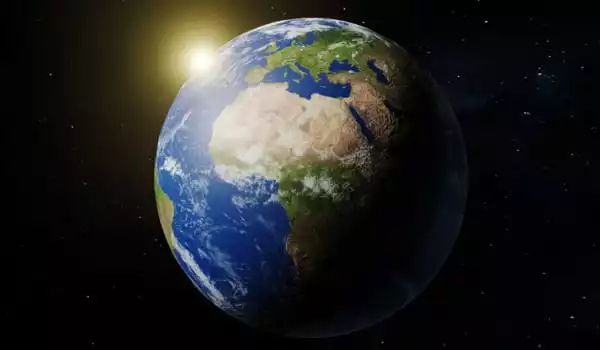The emergence of heritable and evolvable self-reproduction is synonymous with the origin of life. The mechanisms of primordial heredity, however, differed from those of modern cells. The origin of life is without a doubt one of humanity’s most intriguing and fundamental questions. Several scenarios, biochemical mechanisms, and paleoenvironmental conditions have been proposed to explain the origin of life, necessitating an interdisciplinary approach to comprehending such a singular event.
A Rutgers-led team has discovered the structures of proteins that may be responsible for the origins of life in the primordial soup of ancient Earth, answering one of biology’s most profoundly unanswered questions. The findings were published in the journal Science Advances.
The researchers investigated how simple, non-living materials could have given rise to primitive life on our planet. They wondered what characteristics define life as we know it and came to the conclusion that anything alive would have needed to collect and use energy from sources such as the Sun or hydrothermal vents.
This would imply that the ability to shuffle electrons was critical to life at the molecular level. Because metals are the best elements for electron transfer (think standard electrical wires) and proteins carry out the majority of biological activities, the researchers decided to investigate the combination of the two – that is, proteins that bind metals.
We discovered that the metal-binding cores of existing proteins are indeed similar, even if the proteins themselves are not. Our findings suggest that rearrangements of these small building blocks may have had a single or a small number of common ancestors, giving rise to the entire range of proteins and their functions that exist today – that is, to life as we know it.
Professor Yana Bromberg.
They compared all existing protein structures that bind metals to see if there were any shared features, assuming that these shared features were present in ancestral proteins and were diversified and passed down to create the variety of proteins we see today.
Understanding how new folds arose from previously existing ones is essential for understanding protein structure evolution, so the researchers devised a computational method that discovered the vast majority of currently existing metal-binding proteins are somewhat similar regardless of the type of metal they bind to, the organism they come from, or the functionality assigned to the protein as a whole.
“We discovered that the metal-binding cores of existing proteins are indeed similar, even if the proteins themselves are not,” said Yana Bromberg, a professor in the Department of Biochemistry and Microbiology at Rutgers University-New Brunswick.

“We also discovered that these metal-binding cores are frequently composed of repeated substructures, similar to LEGO blocks. Surprisingly, these blocks were discovered in other regions of the proteins, not just metal-binding cores, as well as in a large number of other proteins that were not included in our study. Our findings suggest that rearrangements of these small building blocks may have had a single or a small number of common ancestors, giving rise to the entire range of proteins and their functions that exist today – that is, to life as we know it.”
“We have very little information about how life arose on this planet, and our work adds a previously unavailable explanation,” said Bromberg, whose research focuses on deciphering the DNA blueprints of life’s molecular machinery. “This explanation may also help us in our search for life on other planets and planetary bodies. Our discovery of the specific structural building blocks may also be relevant for synthetic biology efforts, in which scientists aim to create specifically active proteins from scratch.”
The origin of life is a long-debated and contentious topic, with various processes proposed. According to one theory, lightning in the early atmosphere and the subsequent production of amino acids provided the basic constituents of life when combined in long polymer chains. The second involves chemical processes at submarine volcanic vents, which are thought to have been common during the Archean period, and life at those depths would have been protected from the ultraviolet radiation that existed at the time due to the lack of an ozone layer.
Life, according to the third proposed mechanism, originated from the carbon and hydrocarbons in comets and meteorites as they burned in the atmosphere. It has also been proposed that life may have originated in intertidal pools that were repeatedly flooded and dried out in the sun, a process supported by the geological record.





